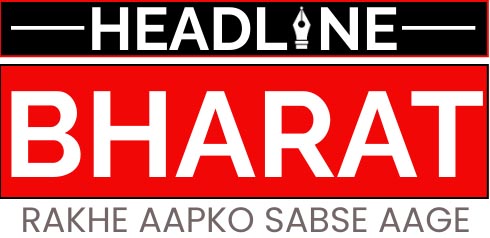[ad_1]
Six-year-old Shivaparvathi is a picture of concentration as she nimbly fills in the colours on a figure sketched on a red-painted, flat piece of wood. In the company of her father, cousins, uncle, grandfather and his brothers, she is busy finishing work on the ritualistic Pallivillu, also known as the Onavillu.
Different kinds of the ritualistic Onavillu are dedicated to the deities at Sree Padmanabha Swamy temple on the day of Thiruvonam.
| Photo Credit:
SREEJITH R KUMAR
A country boat-shaped flat piece of wood with hand-drawn miniature pictures, mainly of Lord Vishnu, Onavillu is dedicated to the reigning deity and other deities of the Sree Padmanabha Swamy temple in Thiruvananthapuram on Thiruvonam day, which falls on September 15 this year.
Sitting on the floor or on low stools, they work in silence in a space in front of their family temple adjacent to their ancestral home. Several wooden planks in different stages of the art work are arranged against a low wall to dry. Each natural colour has to dry before the next can be applied. Colours mixed in coconut shells are applied with brushes of different sizes.
Coloured powders used for Kalamezhuthu is used to paint the Onavillu.
| Photo Credit:
SREEJITH R KUMAR
By tradition and an ancient royal decree, the right to make the ritualistic Onavillu rests with members of the Vilayilveedu family at Karamana in the heart of the city.
Vilayilveedu family members making the ritualistic Onavillu dedicated to the main deities at Sree Padmanabha Swamy temple in Thiruvananthapuram.
| Photo Credit:
SREEJITH R KUMAR
Led by RBK Achari, aka R Bin Kumar Achari, the senior-most member of the family, the four brothers — Binkumar, Sudarsan Achari, Umesh Achari and Sulabhan Achari — and their families pitch in to complete the work, which begins from procuring the right kind of wood, usually of kadambu (Bur) or mahogany, from Tamil Nadu. The wood is then cut into the required shape and dimension and planed to smoothen the wood.
Bin Kumar says the family fasts and offers prayers before beginning the work on the six kinds of Onavillu.
Bin explains: “In the olden days, charcoal, white sand, red sand, turmeric powder and the juice of leaves and flowers were used to colour the planks. Now, we use powders that are used for kalamezhuthu (the art form of drawing deities and ritualistic shapes on the ground). No chemicals or plastics are used.”
The coloured powder is mixed with water, sieved and then again mixed with water to get the right consistency. “Once painted, it has to be protected from water. Otherwise, it will get washed away. After the work is over, we varnish it to protect it,” adds Umesh Achari.
First a coat of yellow is applied followed by a coat of red. Once dry, outlines of figures are drawn with charcoal or pencil on the plank. “The dimensions have all been set down by our ancestors,” says Sudarsan, the only one among the four brothers who draws the eyes of the figures on the main Onavillu.
Sudarsan says in the early days, there were only three kinds of Onavillu. While one (4.5 feet in length and six inches wide) depicted the main deity of the temple as reclining on his side (Ananthashayanam), another one (four feet long and six inches wide) portrayed the Dashavathaara (10 incarnations of Lord Vishnu) and the third (3.5 feet long and four inches wide) the antics of Lord Krishna as a child.
A wooden board shaped like an Onavillu indicates the residence of the Vilayilveedu family at Karamana.
| Photo Credit:
SREEJITH R KUMAR
“In the nineties, one more was added that picturised the Sri Rama Pattaabhishekam. And in 2009, we came out with an Onavillu each dedicated to Ganesha and Sastha,” says Bin Kumar.
The one with the image of Ananthashayanam is submitted at the sanctum of the Sree Padmanabhaswamy temple while the others are dedicated to the different deities in the temple.
The red string and red tassels attached to the Onavillu are made by prisoners in the District Jail who have been making it since the early 19th century.
Until the reign of Sri Chitra Thirunal Balarama Varma, the Onavillu, after the rituals in the temple, were handed over to the monarch or the eldest male of the royal family of Travancore. During the reign of Chitra Thirunal, he opened it for all devotees. From then on devotees could prebook the Onavillu of their choice to be dedicated to the respective deity. After the rituals, it would be handed to them.
Work on the Onavillu begins in the month of Mithunam (June-July) in the Malayalam calendar to meet the increasing demand for it. Bin Kumar asserts that each piece made by the family is hand-drawn as per stipulations handed over to them by their ancestors.
Aswathy Thirunal Gouri Lekshmy Bai of the royal family of Travancore notes in her book Glimpses of Kerala Culture that the Mathalikam records say that in 1502, it was decided that before “items of worship such as gold, silver… were taken to the platform in front of the sanctum of the temple, submission of the Palli Villu should be carried out by Mathevan Kumaraan residing in Puthangadi.”
“Mathevan Kumaraan was our ancestor and we follow the tradition,” says Bin Kumar.
Legend of the Onavillu
The legend goes that when King Mahabali was being banished to the nether world by Vamana, an incarnation of Lord Vishnu, Mahabali requested for darshan of Lord Vishnu during the former King’s annual trip during Onam to visit his subjects. He was allowed to see the image of Lord Vishnu, which was drawn by Vishwakarma on a plank.
“It is actually called Pallivillu. Over time, since it is dedicated to the deity on the day of Onam, it began to be known as Onavillu,” explains Bin Kumar. He adds that it is not to be confused with the Onavillu, a stringed instrument in the shape of a bow that is played in Northern Kerala during Onam.
Showing a printed copy of the writing on the ancient palm leaf manuscript (about 164-plus years old) granting the right to make and submit the ritualistic Onavillu to the family, he reads the old Malayalam that describes in detail the geographical details of the village and how the family was given the right to present the Onavillu as long as there was “the sun and the moon and the stars in the sky.”
The family believes that their ancestors came from Kanchipuram and Thanjavur in Tamil Nadu to escape persecution from an unfriendly ruler. They believe that their ancestors used to live on the banks of the Killi river near Karamana, where a shrine dedicated to Kanchipuram Amman is located. Later, the family relocated to Vaniyanmoola.
“Perhaps, that is why the deity that we draw on the Pallivillu dedicated to the main deity of Padmanabhaswamy temple resembles the deity at Sri Rangam in Trichuchirappalli,” reasons Bin Kumar.
Removing an antique Pallivillu made of teak, wrapped in a piece of soft cloth, he shows the picture drawn on it. “We believe that this has been in our family for eight generations. I am not sure how old it is,” says Bin Kumar.
Vilayilveedu family members with an antique Onavillu in teak.
| Photo Credit:
SREEJITH R KUMAR
“During the Malayalam month of Chingam (August-September) we work round the clock to meet the demand for the Onavillu that is dedicated to the temple. The rest of the year is spent in meeting the demand for it from all around the world,” he adds.
As Onam is around the corner, the entire family steps in to finish the work on the Onavillu. “Two of my brothers were government employees. I am an entrepreneur. But during this time of the year, all of us pitch in to finish the work on the Onavillu. It is not business for us but continuing an age-old tradition,” maintains Sulabhan.
Ananthakrishnan, a student of engineering and one of the artists engrossed in painting the Onavillu, says he is proud to continue the family tradition. On the day of Thiruvonam, Ananthakrishnan will accompany the family to hand over 12 bows to a senior priest of the temple. At an auspicious hour, two bows each are placed inside the sanctum sanctorum of the respective deities. After the fourth day of Onam, the bows are given to the devotees.
Back in their homes, the brothers resume their work to make the Onavillu to meet the increasing demand for this piece of tradition that blends art and devotion.
Published – September 10, 2024 12:29 pm IST
[ad_2]
Source link




